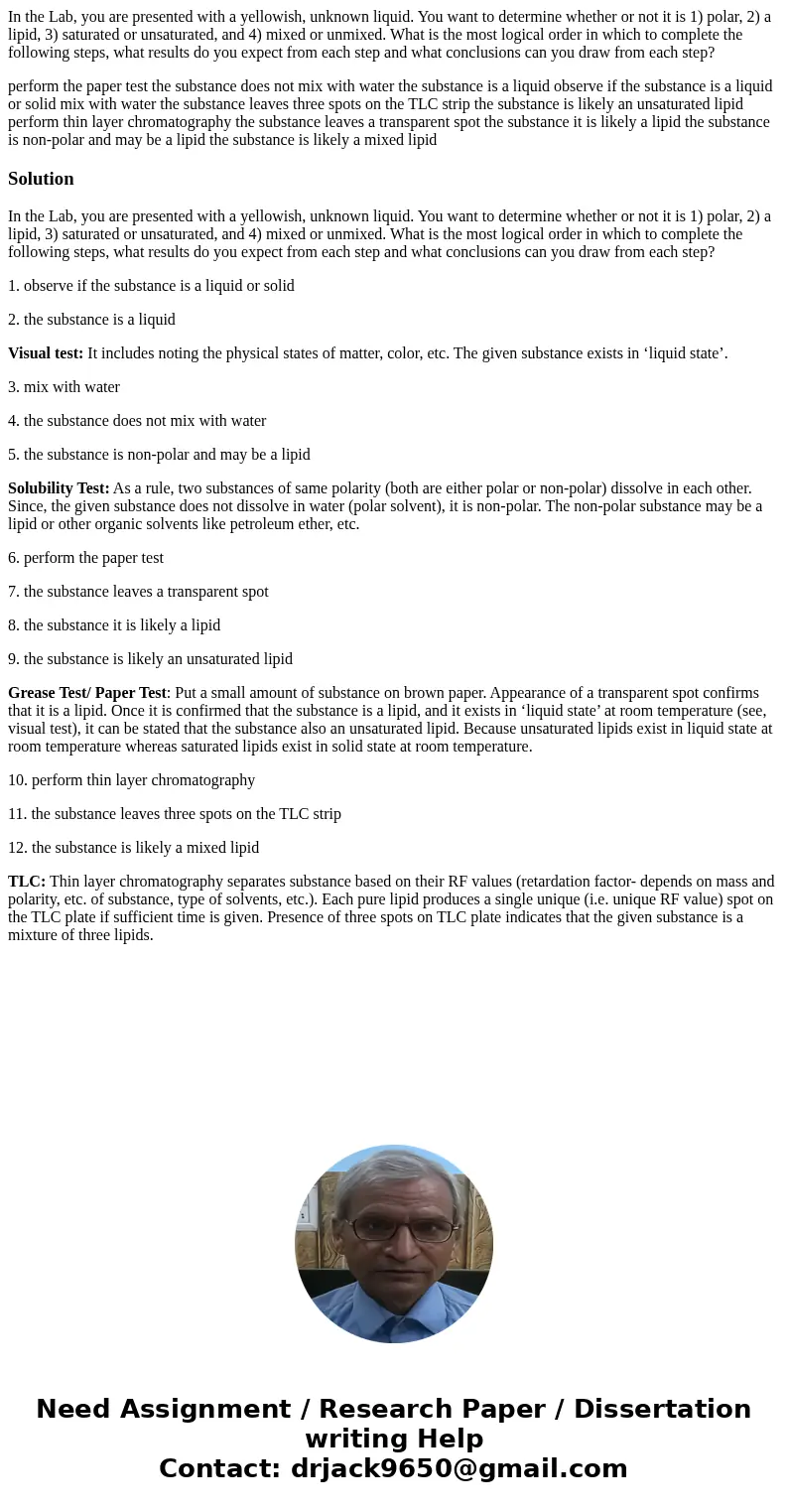In the Lab you are presented with a yellowish unknown liquid
In the Lab, you are presented with a yellowish, unknown liquid. You want to determine whether or not it is 1) polar, 2) a lipid, 3) saturated or unsaturated, and 4) mixed or unmixed. What is the most logical order in which to complete the following steps, what results do you expect from each step and what conclusions can you draw from each step?
perform the paper test the substance does not mix with water the substance is a liquid observe if the substance is a liquid or solid mix with water the substance leaves three spots on the TLC strip the substance is likely an unsaturated lipid perform thin layer chromatography the substance leaves a transparent spot the substance it is likely a lipid the substance is non-polar and may be a lipid the substance is likely a mixed lipid
Solution
In the Lab, you are presented with a yellowish, unknown liquid. You want to determine whether or not it is 1) polar, 2) a lipid, 3) saturated or unsaturated, and 4) mixed or unmixed. What is the most logical order in which to complete the following steps, what results do you expect from each step and what conclusions can you draw from each step?
1. observe if the substance is a liquid or solid
2. the substance is a liquid
Visual test: It includes noting the physical states of matter, color, etc. The given substance exists in ‘liquid state’.
3. mix with water
4. the substance does not mix with water
5. the substance is non-polar and may be a lipid
Solubility Test: As a rule, two substances of same polarity (both are either polar or non-polar) dissolve in each other. Since, the given substance does not dissolve in water (polar solvent), it is non-polar. The non-polar substance may be a lipid or other organic solvents like petroleum ether, etc.
6. perform the paper test
7. the substance leaves a transparent spot
8. the substance it is likely a lipid
9. the substance is likely an unsaturated lipid
Grease Test/ Paper Test: Put a small amount of substance on brown paper. Appearance of a transparent spot confirms that it is a lipid. Once it is confirmed that the substance is a lipid, and it exists in ‘liquid state’ at room temperature (see, visual test), it can be stated that the substance also an unsaturated lipid. Because unsaturated lipids exist in liquid state at room temperature whereas saturated lipids exist in solid state at room temperature.
10. perform thin layer chromatography
11. the substance leaves three spots on the TLC strip
12. the substance is likely a mixed lipid
TLC: Thin layer chromatography separates substance based on their RF values (retardation factor- depends on mass and polarity, etc. of substance, type of solvents, etc.). Each pure lipid produces a single unique (i.e. unique RF value) spot on the TLC plate if sufficient time is given. Presence of three spots on TLC plate indicates that the given substance is a mixture of three lipids.

 Homework Sourse
Homework Sourse